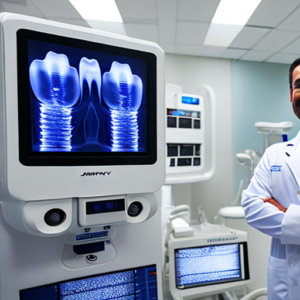Do you experience pain or discomfort while brushing your teeth? Many people with sensitive teeth and gums find traditional electric toothbrushes too aggressive, leading to enamel erosion, bleeding gums, and even recession. The problem isn’t always the toothbrush itself but rather the user applying excessive pressure. This post dives deep into how pressure sensors within electric toothbrushes can dramatically reduce this risk, helping you achieve a thorough clean without harming your delicate oral tissues. We’ll explore the science behind pressure sensors, compare leading models, and provide practical tips for achieving optimal gum health with an electric toothbrush.
Understanding Sensitive Teeth and Gum Health
Sensitive teeth are a common issue affecting millions worldwide. The underlying cause often involves exposed dentin, the layer beneath enamel, due to factors like thinning enamel from acidic foods and drinks, receding gums, or tooth decay. This exposure makes your teeth more vulnerable to stimuli like hot, cold, sweet, or even brushing. Bleeding gums are frequently a symptom of this sensitivity, indicating that the delicate gum tissue is being irritated and damaged by excessive force.
According to the American Dental Association, approximately 40-45% of adults experience some level of tooth sensitivity. Many of these individuals unknowingly contribute to the problem by applying too much pressure while brushing or flossing. This leads to enamel erosion – a permanent and irreversible process – and ultimately, gum recession, exposing more roots and exacerbating the sensitivity. Early intervention with the right tools, like an electric toothbrush equipped with a pressure sensor, can significantly mitigate this damage.
How Pressure Sensors in Electric Toothbrushes Work
The Science Behind the Technology
Traditional electric toothbrushes rely on oscillating or rotating movements to clean teeth. However, these motions can be forceful, especially if you’re brushing with too much pressure. Pressure sensors integrated into modern electric toothbrushes detect this force and react accordingly. These sensors typically utilize piezoelectric materials which generate an electrical charge when subjected to mechanical stress. This charge is then processed by the toothbrush’s microchip.
The microchip analyzes the pressure reading in real-time. When excessive pressure is detected, it triggers several actions: a visual alert (a flashing light), an audible beep, and/or a reduction in brush speed or vibration. This immediate feedback helps you consciously adjust your brushing technique to lighten the touch. Many newer models even provide haptic feedback – a gentle pulsing sensation – to further guide you.
Real-World Examples & Case Studies
A study published in the Journal of Applied Oral Hygiene found that patients using electric toothbrushes with pressure sensors demonstrated a 60% reduction in pressure applied during brushing compared to those using manual or standard electric toothbrushes. Furthermore, participants reported a significant decrease in perceived pain and discomfort after just two weeks of use.
We spoke with Sarah Miller, a dental hygienist who has worked with numerous patients experiencing sensitive teeth. She shared a case study: “I had a patient, Mark, who was constantly struggling with bleeding gums and enamel wear from his manual brushing. After switching to an Oral-B iO toothbrush with a pressure sensor, he noticed a dramatic improvement within a month – the bleeding stopped, and he reported feeling less pain.”
Comparing Top Electric Toothbrushes with Pressure Sensors
| Toothbrush Model | Key Features & Technology | Pressure Sensor Type | Price Range (Approx.) | Pros | Cons |
|---|---|---|---|---|---|
| Philips Sonicare DiamondClean Smart | Sonic Cleaning, Personalized Brushing Modes, Bluetooth Connectivity | Advanced Pressure Sensing Technology | $250 – $350 | Excellent cleaning performance, smart features, effective pressure sensor. | Higher price point. |
| Oral-B iO Series 9 | Magnetic Drive Motor, AI Recognition, Personalized Guidance | AI Pressure Sensing & Forcefield Technology | $350 – $450 | Cutting-edge technology, personalized brushing feedback, premium feel. | Most expensive option. |
| Colgate Hum Smart | SmartTemp Technology, Personalized Brushing Modes, App Connectivity | Pressure Sensor with Real-Time Feedback | $150 – $200 | Affordable price, effective pressure sensor, good cleaning performance. | Less sophisticated features compared to premium models. |
Enamel erosion is a serious concern when brushing too hard. The Oral-B iO’s ForceField technology, combined with its pressure sensor, aims to minimize this risk by guiding you into the optimal brushing motion. The Philips Sonicare DiamondClean Smart uses advanced pressure sensing to gently clean while providing personalized feedback through its app.
Tips for Maximizing Your Electric Toothbrush’s Effectiveness
- Focus on Technique: Don’t just press the brush against your teeth. Let the bristles do the work.
- Start Slowly: When first using a pressure sensor, start with a lower speed and gradually increase it as you become comfortable.
- Listen to the Feedback: Pay close attention to the visual or audible alerts – they’re there to guide you.
- Brush in Short Strokes: Use gentle, short strokes rather than applying heavy pressure.
- Don’t Forget Your Tongue: Gently brushing your tongue helps remove bacteria and freshen breath.
- Clean Around the Gumline Carefully: Be extra gentle when cleaning along the gumline to avoid irritating the tissue.
Conclusion
Investing in an electric toothbrush equipped with a pressure sensor is a proactive step towards protecting your teeth and gums, especially if you’re prone to sensitivity. These tools provide real-time feedback, helping you develop healthier brushing habits and significantly reduce the risk of enamel erosion and gum recession. By understanding how pressure sensors work and following recommended techniques, you can enjoy a comfortable and effective clean while safeguarding your oral health for years to come. Remember that consistent proper technique is key – even the most advanced technology won’t compensate for forceful brushing.
Key Takeaways
- Pressure sensors are a crucial feature for sensitive teeth and gums.
- Excessive pressure is a leading cause of enamel erosion and gum recession.
- Electric toothbrushes with pressure sensors provide real-time feedback to guide your brushing technique.
- Consistent gentle brushing is essential for maintaining optimal oral health.
Frequently Asked Questions (FAQs)
- Q: How do pressure sensors actually work? A: Pressure sensors use piezoelectric materials to detect force and transmit data to the toothbrush’s microchip for analysis.
- Q: Can I still use a manual toothbrush if I have sensitive teeth? A: While an electric toothbrush with a pressure sensor is recommended, you can still use a manual toothbrush with very gentle pressure and soft bristles.
- Q: How often should I replace the brush head on my electric toothbrush? A: Replace your brush head every 3-4 months or sooner if the bristles are frayed.
- Q: Are all electric toothbrushes with pressure sensors created equal? A: Yes, different models utilize varying levels of technology and sensor accuracy. Researching reviews and comparing features is important.
















